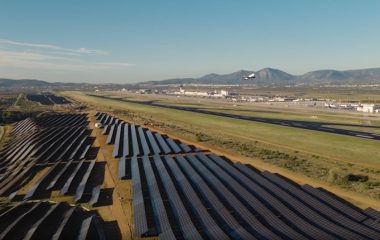
As part of a visit by professors from the Belgrade, Novi Sad and Niš universities to the Hungarian Connected and Automated Mobility Cluster of Zala, a Memorandum of Understanding was signed between the cluster and Serbia’s National Association of Electrical and Autonomous Vehicles (NAAEV).
The association organized a visit to the Budapest University of Technology and Economics, the Connected and Automated Mobility Cluster of Zala and the Automobile Proving Ground – ZALAZONE for a team of 16 prominent experts from technical faculties of the Belgrade, Novi Sad and Niš universities.
The signing of the Memorandum of Understanding on the scientific, technical and commercial cooperation between the Connected and Automated Mobility Cluster of Zala and the NAAEV has created detailed preconditions for direct cooperation between members of the two organizations, NAAEV said.
Electric and autonomous mobility, e-infrastructure and 5G communications were the main topics of the talks between Serbian and Hungarian experts
During the two-day talks between the Serbian and Hungarian experts, the focus was on projects related to electric and autonomous mobility, e-infrastructure and 5G communications.
The two sides exchanged experience and ideas, and considered the possibilities of cooperation on bilateral and multinational projects in these fields, financed by different European funds, within which the Hungarian side has strong experience. Common interests were defined and the basis for further cooperation was established, NAAEV said.
The cluster of Zala funded by IT, electronics, aviation, and motor vehicle companies
The Connected and Automated Mobility Cluster of Zala was funded by IT, electronics, aviation, and motor vehicle companies in January 2018, with the goal of institutionally connecting research, development and innovation capacities in the field of intelligent transport systems.
The Zalaegerszeg test track or Automotive Proving Ground-ZALAZONE is proving ground for conventional, electric and autonomous vehicles. The project was initiated by the Hungarian government in 2016, while the inauguration of the first phase took place in July this year. The idea is to establish a full-range validation facility for the vehicles and communication technologies of the future enabling multi-level testing opportunities from prototype tests to serial product development.


















Be the first one to comment on this article.